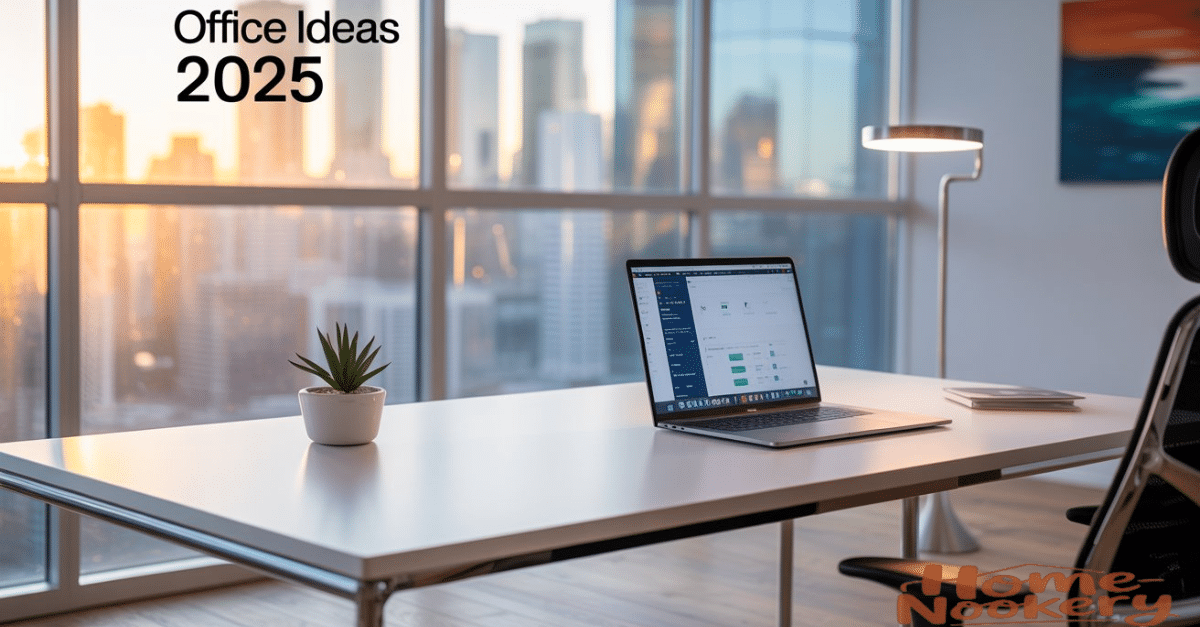In the post-pandemic world of 2025, our homes continue to pull double duty as living and working spaces. The challange? Creating a productive office environment when square footage is at a premium. As remote work solidifies its place in our culture, designing functional yet aesthetically pleasing workspaces has become both an art and a science.
Small spaces demand big ideas. And trust me, I’ve seen it all—from closets transformed into creative hubs to kids’ rooms reimagined as productivity powerhouses. After a decade designing compact workspaces, I’m excited to share the most innovative approaches emerging this year.
1. Vertical Thinking Revolutionizes Small Offices
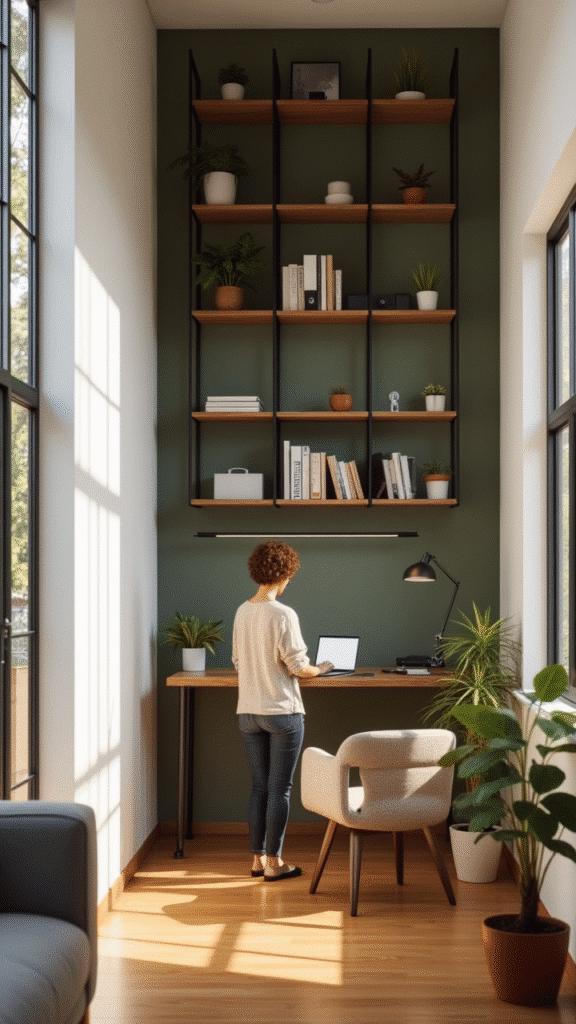
The walls are your best friends in 2025. Smart shelving systems that respond to voice commands have become more affordable, allowing you to maximize vertical space without sacrificing style. These modular systems can be customized to your exact needs, with sections that move up or down to access different supplies throughout your workday.
Look for wall-mounted desks with built-in storage that fold away when not in use. The latest models incorporate charging stations and even projector surfaces that transform your wall into an instant presentation space. Remember to leave some negative space though—overcrowding your walls creates visual noise that effects concentration.
2. Nanotech Furniture That Adapts to Your Needs
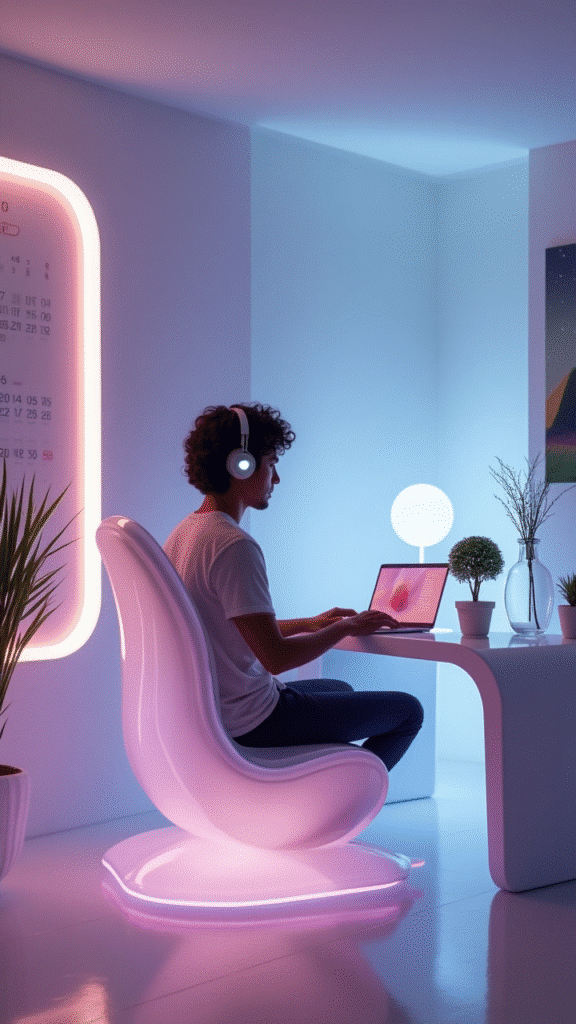
Furniture in 2025 isn’t just foldable—it’s transformative. The latest designs incorporate shape-memory materials that can change form with minimal effort. Imagine a desk that expands when you need extra workspace and contracts when guests arrive.
My clients are obsessed with the new gel-form chairs that adjust to your body’s pressure points and temperature. They take up half the space of traditional office chairs while providing twice the comfort. These adaptive pieces cost more upfront but save tremendus amounts of space and reduce the need for multiple furniture items.
3. Smart Glass Partitions Create Rooms Within Rooms
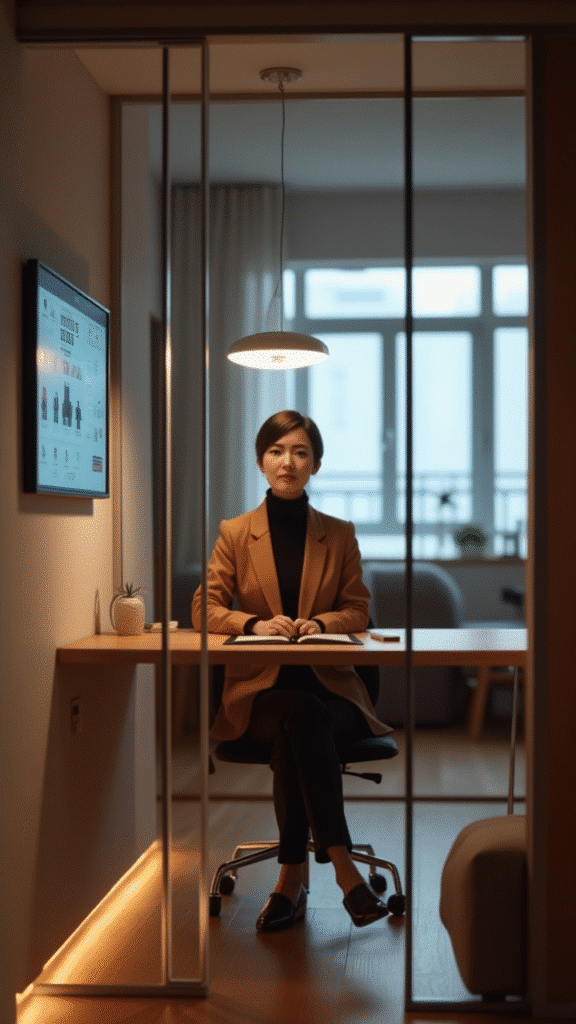
Open floor plans still dominate, but privacy concerns have led to innovative solutions. Programmable smart glass partitions can create instant “room dividers” that turn opaque when you need focus and transparent when you want openness. They also double as projection surfaces for virtual meetings.
Some models now incorporate sound-dampening technology, creating acoustic zones in shared spaces. This technology has dropped in price significantly over the past two years, making it accessible for average homeowners and not just tech executives.
4. A Room Closet Bohemian Retreat
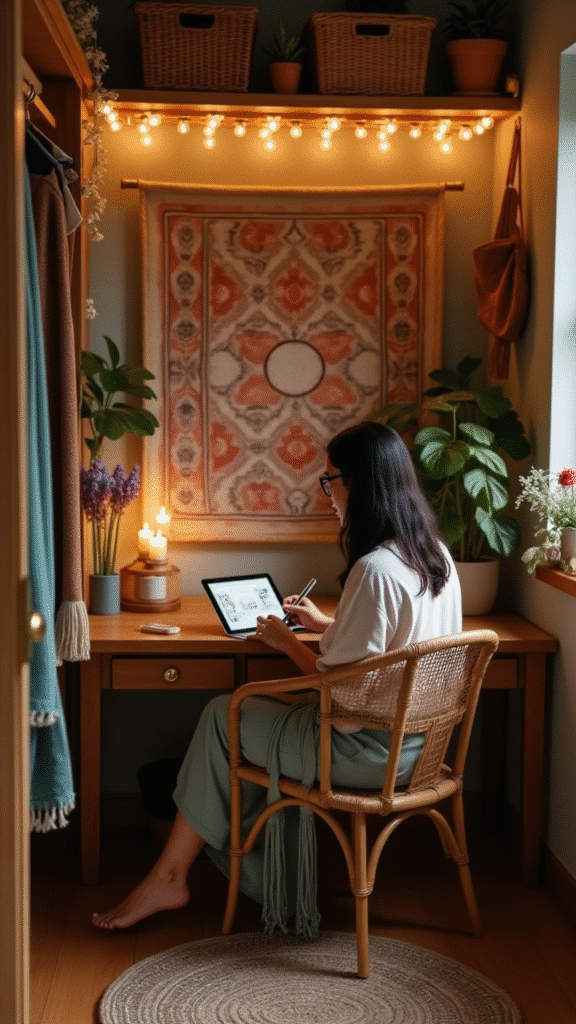
Never underestimate the potential of a closet. In 2025, the “cloffice” (closet office) has evolved into something truely special. By removing the doors and installing a floating desk and tailored shelving, even a standard closet can become a bohemian-inspired workspace oasis.
The key to the bohemian cloffice is texture and personality. Layer sustainable textiles like organic cotton canopies and recycled fabric wall coverings. Add macramé plant hangers above your workspace—the cascading greenery creates a visual extension of the space while improving air quality.
Lighting makes all the difference in these enclosed spaces. The new flexible LED strips can be molded into artistic shapes while providing sufficient task lighting. Most of my clients opt for warm-toned smart bulbs that automatically adjust throughout the day to maintain circadian rhythm and eye health.
5. Biophilic Integration Becomes Non-Negotiable
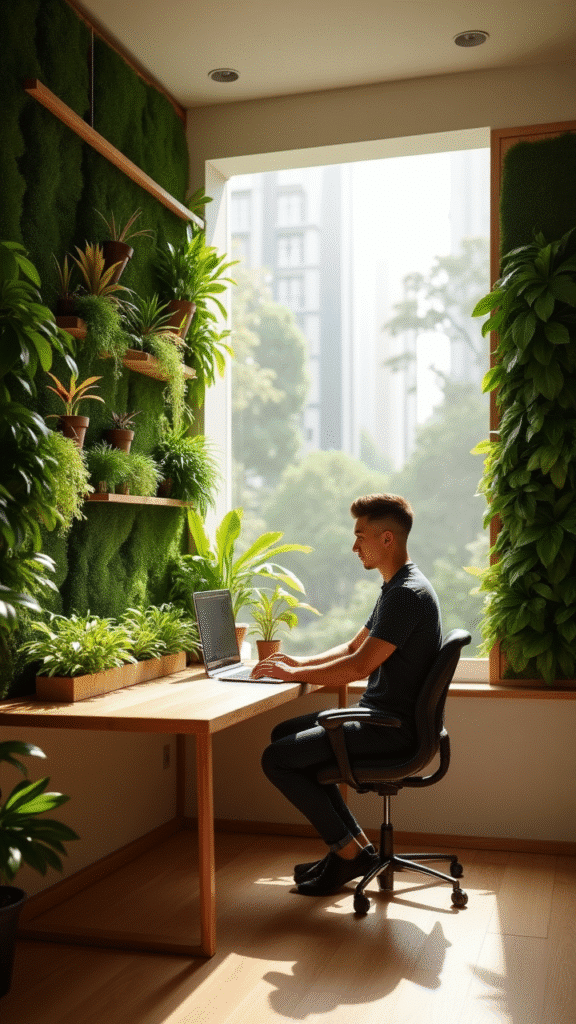
Connecting to nature isn’t just nice—it’s necessary. The latest research confirms what we’ve long suspected: biophilic design elements boost creativity by up to 15% and reduce stress markers significantly. In small spaces, vertical gardens and “living walls” have become the standard.
Maintenance-free options using preserved moss and self-watering technologies make these installations practical even for the plant-averse. Look for the new hydroponically-integrated desk systems that incorporate growing spaces into their structure. These not only purify your air but create a psychological separation between work and home life.
6. Turning the Kids’ Space into a Functional Office
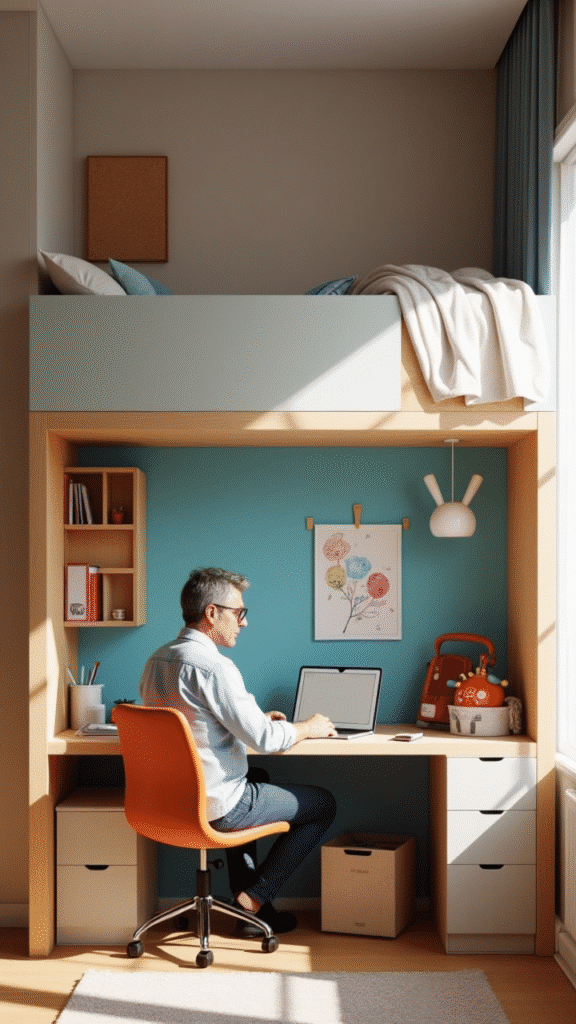
Parents everywhere have perfected the art of carving workspaces from children’s domains. The trick is creating boundaries without sacrificing either function. In 2025, modular furniture systems designed specifically for this dual-purpose use have become mainstream.
Consider a loft bed with an integrated office underneath—but the modern versions include sound-absorbing curtains and specialized lighting that won’t disturb sleeping children during early morning calls. The latest designs incorporate secure storage for both work documents and toys, with clear visual cues about which spaces belong to whom.
Color zoning works wonders in these shared spaces. Use contrasting palettes to visually separate the work area from play zones. This helps children understand boundaries while helping you mentally transition between parent and professional roles. Many of my clients report this simple strategy has improved there work-life balance significantly.
7. Acoustic Management Becomes Priority
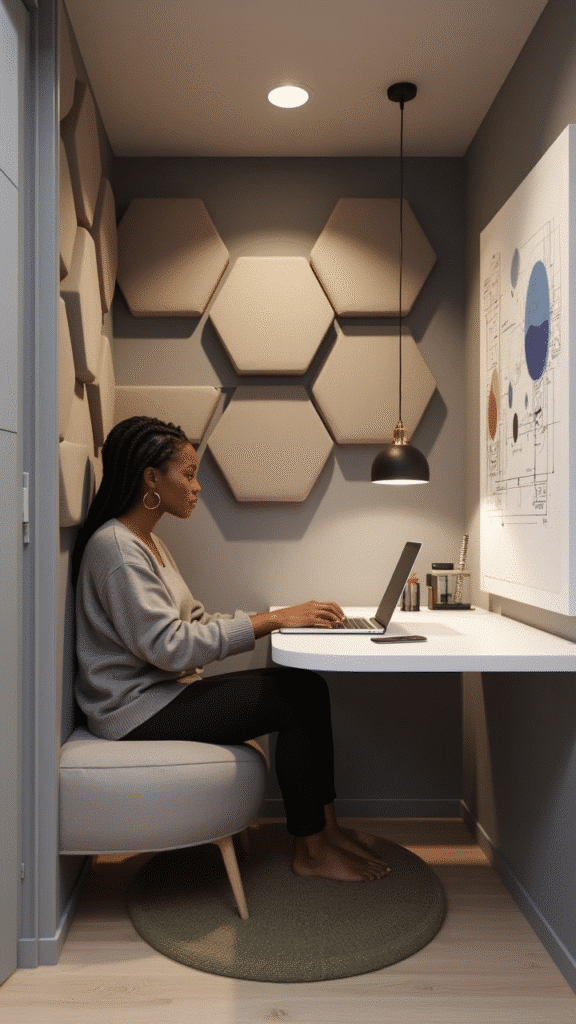
With multiple household members working or studying remotely, controlling sound has become essential. Micro-acoustic panels that double as art pieces are revolutionizing home offices. These customizable sound absorbers can be printed with family photos or artwork while dampening echoes and voice carry.
Sound-masking systems have become more sophisticated and smaller. The 2025 models create precise “bubbles” of white noise that don’t disturb others nearby. Some even synchronize with your calendar to intensify during scheduled calls or decrease when you’re doing focused work alone.
8. Designing a Small Spaces Bedroom Office
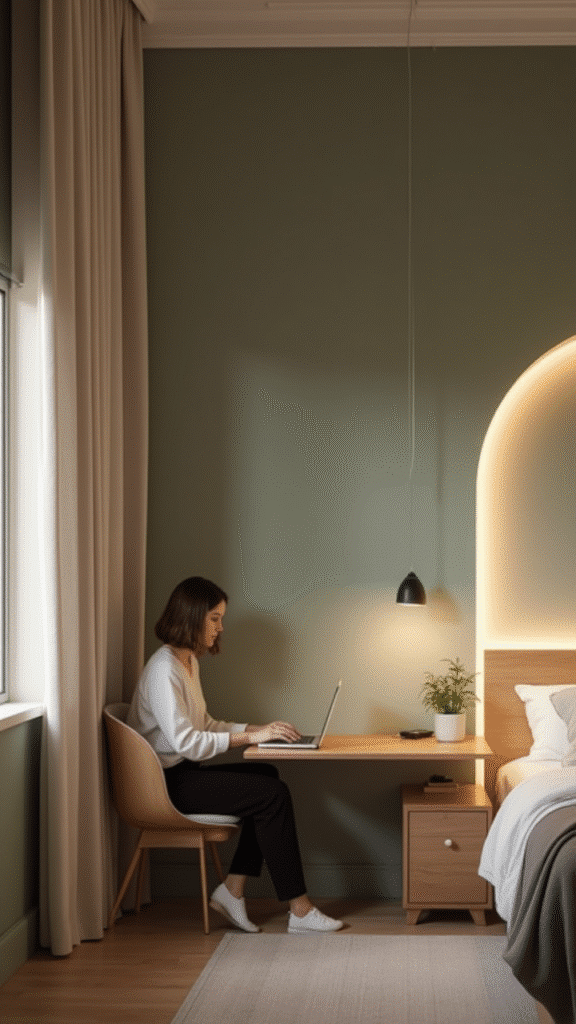
When your bedroom must also serve as your workspace, psychological separation becomes crucial. The latest approach uses lighting zones rather than physical dividers. Programmable LEDs can create distinct ambient environments for work versus rest, signaling to your brain when to focus and when to relax.
Furniture placement is key in bedroom offices. Position your desk to face away from the bed—preferably near a window—and use a decorative screen that can be moved into place after work hours to “close” the office visually. The new ultra-thin room dividers with built-in air purification provide both psychological and literal freshness.
Look for the new “circadian desks” that slowly change position throughout the day, encouraging you to alternate between sitting and standing based on your energy levels. These smart surfaces also change temperature slightly to help maintain alertness during afternoon slumps or promote relaxation as evening approaches.
9. Holographic Displays Eliminate Screen Clutter
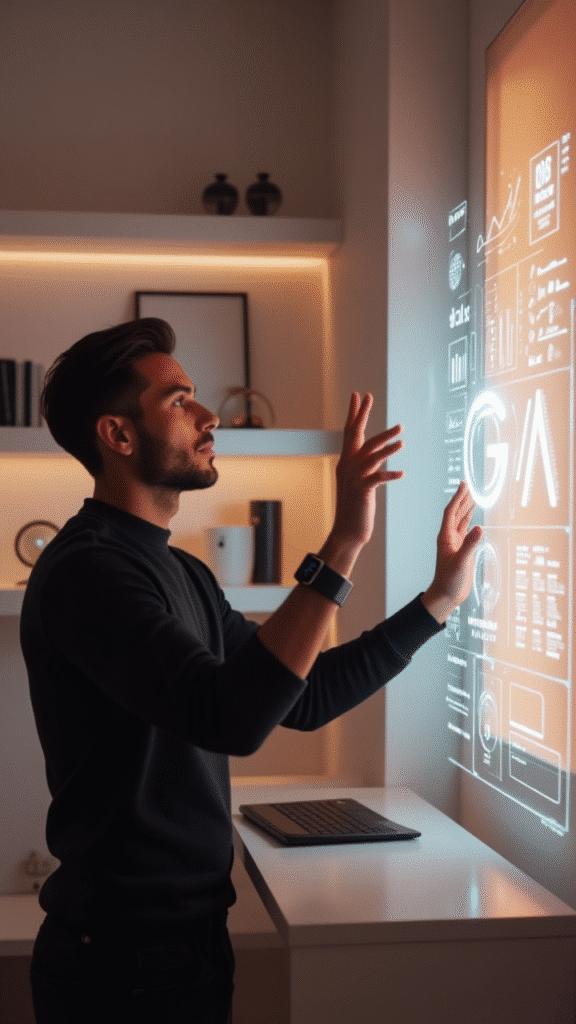
Multiple monitors once dominated home offices, but 2025 has brought affordable holographic display technology to the mainstream. These space-saving devices project three-dimensional workspaces that can be manipulated by hand gestures, eliminating the need for physical screens and their associated bulk.
The environmental impact isn’t lost on consumers either—these systems use a fraction of the resources of traditional displays. Early adoption was limited by software compatibility, but the major productivity suites have all released holographic-compatible versions this year. The learning curve is surprisingly gentle, with most users reporting full proficiency within a week.
10. Furniture That Charges Your Devices
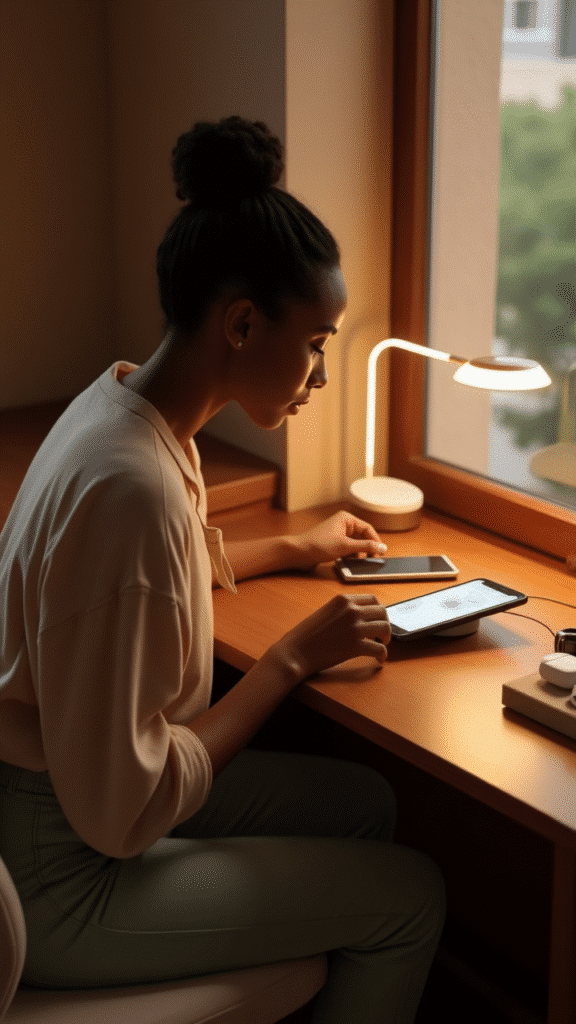
Wire management remains a perennial challenge in small spaces. The breakthrough this year has been truly wireless power transmission incorporated into furniture. Desks, shelving, and even decorative objects can now power your devices within a three-foot radius.
This technology has transformed how we design compact offices. Without the need for strategic outlet placement, workspaces can be arranged for optimal flow rather than proximity to power sources. The efficiency gains are substancial, particularly in historic buildings where electrical updates would be costly or impossible.
11. Personalized Climate Microzones
Working from home often means compromising on temperature with other household members. The newest solution? Microclimate technology that creates a personalized comfort bubble around your workspace without affecting the rest of the room.
These systems combine directional airflow, radiant heat elements, and cooling surfaces to maintain your ideal temperature within about two feet of your work area. They consume significantly less energy than heating or cooling an entire room and have become surprisingly affordable in the past year.
12. AI Workspace Optimization
Artificial intelligence has moved beyond virtual assistance to physical space optimization. The latest home office planning apps use AR to scan your available space and suggest optimal configurations based on your work habits, equipment needs, and aesthetic preferences.
These systems learn from your behavior, automatically adjusting lighting, sound masking, and even desk height throughout the day. The privacy concerns of earlier versions have been addressed with local processing that keeps your data on your own devices rather than in the cloud.
13. Multisensory Productivity Enhancement
The science of productivity has evolved beyond visual design to embrace all senses. Scent diffusers programmed to release focus-enhancing aromas during deep work sessions and calming scents before presentations have become standard equipment in high-performance home offices.
Tactile elements like textured surfaces that stimulate creativity or induce calm are being incorporated into desk accessories and wall coverings. Even soundscapes have become sophisticated, with personalized audio environments that adapt to your task, mood, and energy level throughout the workday.
14. Recessed Storage Reimagined
The walls themselves have become storage opportunities in 2025’s small office designs. Recessed cabinetry that appears flush with the wall has evolved to include specialized compartments for different work tools. The innovation comes in how these spaces are accessed—touch-sensitive panels that recognize different pressure patterns to reveal different storage areas.
This approach maintains visual cleanliness while maximizing functionality. Some systems even incorporate UV sanitizing light within storage compartments—a feature that gained popularity during pandemic years and has remained relevant for shared household supplies.
15. Digital-Physical Integration Points
The distinction between digital and physical workspaces continues to blur. Smart surfaces that can instantly digitize physical documents placed upon them have become more responsive and accurate. The latest models can even capture and organize handwritten notes in real time.
These integration points serve as bridges between traditional and digital workflows, especially valuable for creative professionals who still prefer some analog processes. Many of my clients report these hybrid tools have actually reduced their screen time while improving documentation and organization.
16. Convertible Meditation Spaces
Mental health awareness has transformed office design. The most forward-thinking small space offices now include convertible meditation nooks—areas that can transform from productive workspaces to calming retreat zones for mindfulness breaks.
These typically incorporate sound-dampening elements, gentle lighting that mimics natural patterns, and sometimes subtle aromatherapy components. The physical transformation might be as simple as a cushion that unfolds from wall storage or as elaborate as a canopy that descends from the ceiling to create a cocoon-like environment.
Final Thoughts: Integration Is Everything
The most successful small space offices of 2025 don’t just incorporate individual smart elements—they integrate them into cohesive ecosystems. The technologies and design approaches should work together seamlessly, adapting to your needs without requiring constant adjustment.
Remember that personalisation matters more than following trends blindly. The best office is one that reflects your specific work style and aesthetic preferences while maximizing the potential of your available space. Sometimes the simplest solutions—like a well-placed mirror to expand visual space or a carefully selected color palette—make the biggest difference in day-to-day satisfaction.
As we navigate the evolving landscape of work, our environments must evolve too. These sixteen approaches represent the cutting edge of small space office design in 2025, but the field continues to develop rapidly. The most important feature of any workspace remains its ability to support your well-being and productivity—regardless of its size.

Mariana is the founder and voice behind Home Nookery, a curated blog dedicated to home design, décor inspiration, and cozy living. With a passion for creating beautiful, functional spaces, Mariana shares practical tips, styling ideas, and thoughtful insights to help readers turn their houses into homes. Whether you’re redesigning a room or just adding a touch of charm, she’s here to guide you with creativity and heart.
